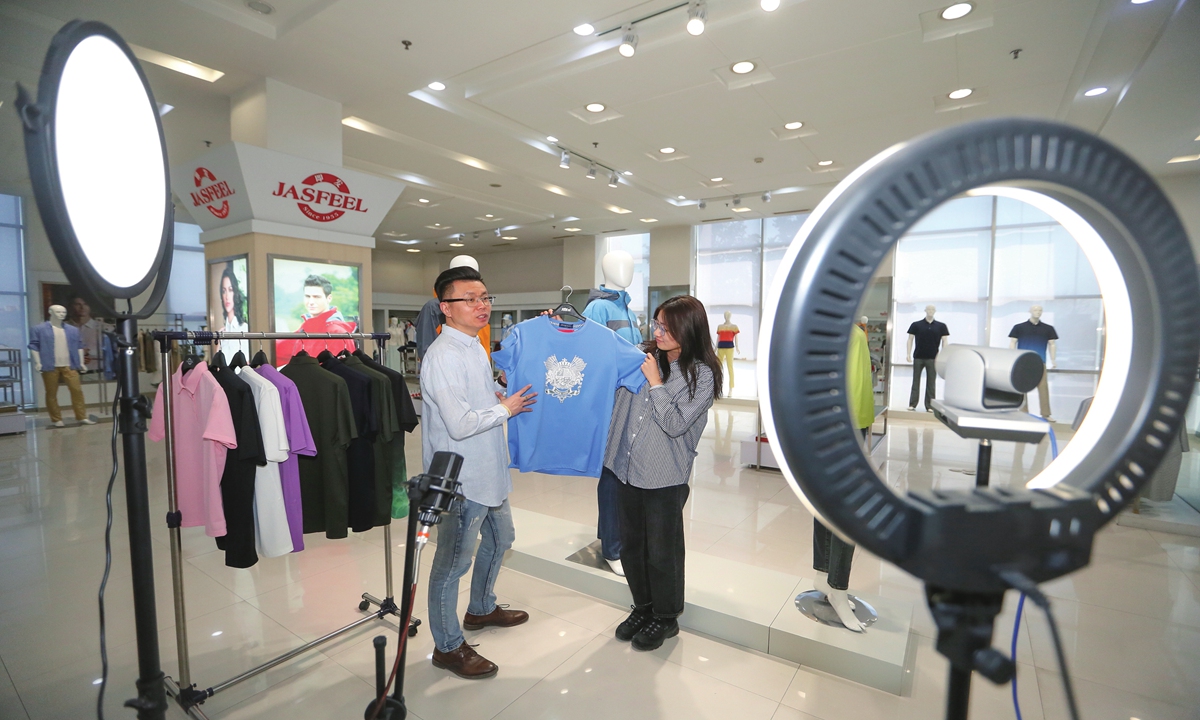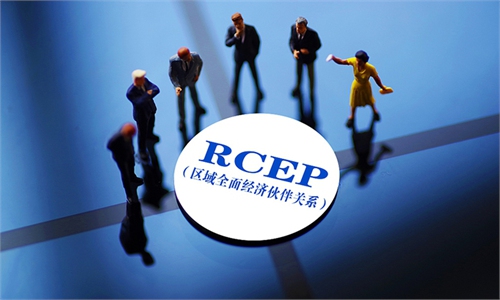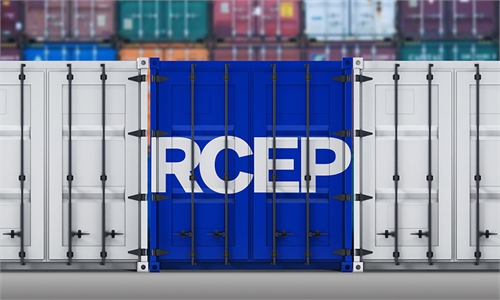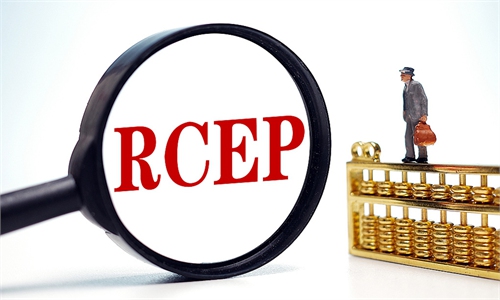Canton fair unleashes new development opportunities for RCEP; Chinese yuan sees greater potential for going global

Two employees from East China's Shandong Province sell clothing products exported to overseas markets via the Canton fair online platform on April 15, 2022. Photo: Xinhua
China's signature biannual tradeshow, the Canton fair 2022, known as the China Import and Export Fair, is running from April 15 to 24 this year, highlighting the new opportunities for both domestic and overseas companies , with countries belonging to the Regional Comprehensive Economic Partnership (RCEP) taking center stage three months since this world's largest free-trade agreement came into effect.
While this year's event is online only format, it has still drawn unprecedented attention, with 117 companies from the RCEP countries taking 29.1 percent of the total import exhibitors on show, a significant number despite the global uncertainty such as the COVID-19 pandemic, inflation and geopolitical tensions.
Several business insiders and analysts, including those who participated in the fair on Wednesday, embraced the vast potentials yet to fully unleash from the RCEP, including dividends such as duty reduction, trade facilitation, and yuan internationalization.
"For foreign trade companies, entry into force of RCEP will provide a strong boost for companies to develop new markets," General Manager Assistant Tong Min with China Electronics Zhuhai told the Beijing Youth Daily on Wednesday.
The company has brought solar handheld lights, air purifiers and smart handheld cash registers to the fair this year.
China Electronics Zhuhai has already obtained qualification as an approved exporter for RCEP member countries, and will use the policy dividends to explore new business markets, find more partners and expand business with RCEP markets, Tong said.
Jiangsu Soho International Group, a domestic firm that engages in silk import and export based in East China's Jiangsu Province, has participated in every single edition of the Canton fair to date, including this time, despite the event moving online due to the epidemic.
Speaking to the Global Times on Wednesday, Ding Linlin, the company's general manager, said that the RCEP has been significant in guiding the company's future growth.
"While most of the domestic import and export trading companies may focus on Europe, America or Japan, RCEP shows us that ASEAN members also have huge development potential," Ding said.
Although the company currently has no substantial imports or exports to ASEAN, it has already invested in factories in Myanmar and Cambodia. The implementation of RCEP will help the company rapidly develop its business in ASEAN, according to Ding.
Ecovacs, a domestic robot producer, based in Suzhou, East China's Jiangsu Province, has participated in Canton fair for 25 years in a row, and this year they displayed their signature products including a floor-sweeping robot, air-purifier robot and window cleaning robot.
The company said that they will further explore regulations and mechanisms linked to the RCEP so as to better integrate into both regional and global supply chains.
On January 1, 2022, the RCEP officially entered into force for 10 countries, followed by South Korea on February 1 and Malaysia on March 18. As of now, the agreement covers 12 economies.
Dividends continued to be released in the first quarter in which RCEP came into effect.
From January to March, China's imports and exports with RCEP member countries reached 2.86 trillion yuan, an increase of 6.9 percent, accounting for 30.4 percent of China's total foreign trade value, data published by the General Administration of Customs revealed.
Customs data showed that in the first quarter, China's imports and exports between ASEAN accounted for 47.2 percent of the country's foreign trade with all RCEP trading partners.
The RCEP is an important milestone in the process of East Asian economic integration and a major step in promoting the liberalization and facilitation of global trade and investment, Chinese Foreign Ministry spokesperson Wang Wenbin told a regular press conference on Wednesday.
Under the RCEP, more than 90 percent of merchandise trade among members will eventually be subject to zero tariffs.
In addition to tariff preferences, the RCEP has also set a benchmark for economic and trade rules in the Asia-Pacific region in terms of rules of origin, customs procedures, inspection and quarantine.
Potential for Chinese yuan
With the growing opportunities for the regional trade and cooperation, the Chinese yuan is also expected to play a critical role in enhancing trade activities and reducing risks against the backdrop of the mega trade deal.
Zhihuan E, the Chief Economist from the Bank of China (Hong Kong), said at a recent forum at the tradeshow that RCEP countries are the focus regions for the internationalization of the Chinese yuan.
The RCEP is the region with the highest density of clearing banks in the world. In the financial market, the channels for RCEP to invest in Chinese yuan assets have gradually expanded, financial products have become more diversified, and there is huge room for the use of yuan to denominate bulk commodities, according to E.
The government is also backing the use of yuan in regional trade. In guidance addressing the RCEP issued by the Ministry of Commerce in January, the ministry proposed increasing the use of Chinese yuan for settlement in trade and investment activities in the RCEP region, and help market players reduce exchange costs and avoid exchange rate fluctuation risks.
The ministry pledged to continue to optimize policy arrangements and infrastructure construction to provide a favorable institutional environment for cross-border settlement completed using yuan.
Moving forward, China will work with all parties to actively participate in the construction of RCEP mechanisms, jointly promote the improvement of the overall implementation level of the agreement, and make new contributions to supporting the multilateral trading system and promoting the building of an open global economy, Wang said.




